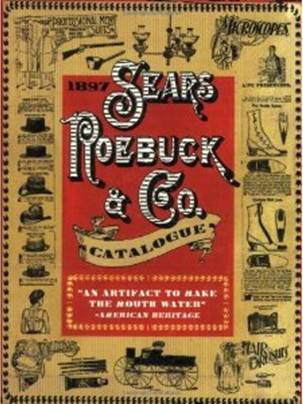 If you were in the market for a watch in 1880, would you know where to get one? You would go to a store, right? Well, of course you could do that, but if you wanted one that was cheaper and a bit better than most of the store watches, you went to the train station! Sound a bit funny? Well, for about 500 towns across the northern United States, that's where the best watches were found. If you were in the market for a watch in 1880, would you know where to get one? You would go to a store, right? Well, of course you could do that, but if you wanted one that was cheaper and a bit better than most of the store watches, you went to the train station! Sound a bit funny? Well, for about 500 towns across the northern United States, that's where the best watches were found.
Why were the best watches found at the train station? The railroad company wasn't selling the watches, not at all. The telegraph operator was. Most of the time the telegraph operator was located in the railroad station because the telegraph lines followed the railroad tracks from town to town. It was usually the shortest distance and the right-of-ways had already been secured for the rail line.
Most of the station agents were also skilled telegraph operators and that was the primary way that they communicated with the railroad. They would know when trains left the previous station and when they were due at their next station. And it was the telegraph operator who had the watches. As a matter of fact they sold more of them than almost all the stores combined for a period of about 9 years.
This was all arranged by "Richard", who was a telegraph operator himself. He was on duty in the North Redwood, Minnesota train station one day when a load of watches arrived from the East. It was a huge crate of pocket watches. No one ever came to claim them. Here’s what happened.
A common scam existing at the time involved wholesalers who would ship their products to retailers who had not ordered them. Upon refusal, the wholesaler would offer the already price-hiked items to the retailer at a lower consignment cost in the guise of alleviating the cost to ship the items back. The unsuspecting retailer would then agree to take this new-found bargain off the wholesaler's hands, mark up the items and sell them to the public, making a small profit in the transaction. A shipment of gold-filled pocket watches from a Chicago manufacturer was shipped to a Minnesota retailer, Edward Stegerson. But Stegerson, a retailer savvy to the scam, flatly refused the watches. Young "Richard" jumped at the opportunity, and made an agreement with the wholesaler to keep any profit he reaped above $12, and then he set about offering his wares to other station agents along the railroad line for $14. The watches were considered an item of urban sophistication. Also because of the growth of railways, and the recent application of time zones, farmers needed to keep time accurately which had not been necessary until then. For those two reasons the station agents had no trouble selling the watches to passers-by.  Within six months, Richard had netted $5,000 and felt so confident in this venture that he moved to Minneapolis and founded his own watch company. He began placing advertisements in farm publications and mailing flyers to potential clients. From the beginning, it was clear that Richard had a talent for writing promotional copy. He took the personal approach in his ads, speaking directly to rural and small-town communities, persuading them to purchase by mail-order. Within six months, Richard had netted $5,000 and felt so confident in this venture that he moved to Minneapolis and founded his own watch company. He began placing advertisements in farm publications and mailing flyers to potential clients. From the beginning, it was clear that Richard had a talent for writing promotional copy. He took the personal approach in his ads, speaking directly to rural and small-town communities, persuading them to purchase by mail-order.
In 1887, Richard moved to Chicago. Richard became so busy that he had to hire a professional watch repairman to help him with the orders and to fix broken watches. That was Alvah. And the rest is history as they say. The business took off and soon expanded to many other lines of dry goods.
YES, IT'S A LITTLE KNOWN FACT that for a while in the 1880's, the biggest watch retailer in the country was at the train station. It all started with a telegraph operator: Richard Sears and his partner Alvah Roebuck!
|




